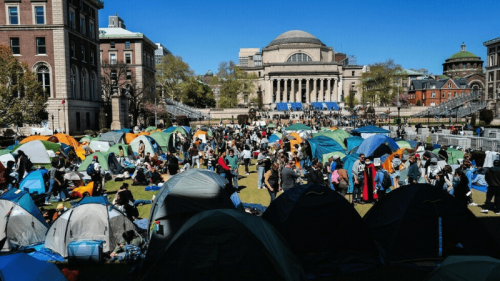
TO those who have been paying attention despite the noise and fury of the domestic political scene, something very important appears to be changing between China and India. It is worthwhile for Pakistan to pay attention, especially bearing in mind that the Indian Ministry of External Affairs was the first to publicly congratulate China on getting the vice presidency of the Financial Action Task Force on that Friday when the rest of Pakistan was busy trying to figure out what exactly happened during those meetings.
“Congratulations to China on its election as Vice President of Financial Action Task Force at the #FATF plenary mtg. on 23 February 2018. We remain hopeful that China would uphold & support the objectives & standards of FATF in a balanced, objective, impartial & holistic way” is what that midday tweet from the official spokesperson of the ministry said, leaving us all wondering what exactly had happened there in Paris.
But it doesn’t end here. More recently, the Indian government called on all its officials to refrain from attending a ‘Thank you India’ rally being organised by the Dalai Lama in Delhi, which is an annual affair and always sees attendance by high-level Indian officialdom, as well as searing rhetoric directed towards China during the speeches that take place there. This time the event has been rescheduled and moved back to Dharamsala, where the Tibetan organisation is based, and will hold the rally on April 1.
There was no open advisory from the government to do this apparently, just a quiet word whispered to the Dalai Lama to keep things tame, and an internal communication letting government officials (including from the states) to refrain from attending. The gesture has been interpreted by columnists and observers of Indian foreign policy as a clear bow to Chinese sensitivities.
Beneath the surface, we see other indications that something larger than a regional flashpoint and a few irritants might be in the driving seat.
What is interesting is that this bow comes after a flurry of articles in the Indian media announcing that China is hardening its positions in the Doklam plateau, the most sensitive point along the 4000 kilometre-long border between India and China because it is where three countries meet: China, India and Bhutan. The Chinese acknowledged the building of the new infrastructure on the plateau as early as January, saying in an official statement that they are building in their own territory (the area is, in fact, disputed with Bhutan, while India supports Bhutan’s claim).
In the first few days of March, reports in the Indian media began to talk of new helipads being built in Doklam, housing sufficient to put up 1,800 troops, artillery, trenches and increased air defences. Even in late February, there was mounting concern in India over these developments, with reports circulating that this was the first time that the Chinese hosted troops at that altitude, implying that their presence at the positions they held since August 2017, when last summer’s stand-off had come to a standstill, may be permanent.
As of a few days ago, this hardening of the Chinese positions in Doklam was officially acknowledged by the India’s defence minister. Yet, India’s diplomacy continues to favour going soft on Chinese sensitivities, by pulling away from the Dalai Lama as well as staying out of the ongoing crisis in the Maldives.
So what’s going on? One take is that India is doing all this with an eye to the forthcoming Shanghai Cooperation Organisation summit to be held in China this June. Additionally, reports are also circulating that a high-level visit from Beijing to Delhi could take place later this year, possibly with President Xi Jinping or Premier Li Keqiang. These are unconfirmed reports, but it is interesting to see that those Indian journalists who regularly interact with the external affairs ministry in Delhi are coming away with a sense that Indian diplomacy is now in pursuit of objectives that go beyond Doklam, the Maldives, Bhutan or Bangladesh or any of the other traditional regional issues that drive its foreign policy. And in the course of doing so, Indian diplomats appear to be willing to look past a few trenches and helipads in Doklam, and ‘Thank you India’ rallies in Delhi.
What might these objectives be? One clue might be provided by another fact that hit the headlines at the same time as all these other developments. “India-China bilateral trade hits historic high of $84.44 billion in 2017” the Times of India declared on Wednesday. This is a 19 per cent year-on-year increase, with Indian exports to China seeing a near 40pc increase in 2017.
Beneath the surface, we see other indications that something larger than a regional flashpoint and a few irritants might be in the driving seat in Delhi’s equation with Beijing. The appointment of Vijay Gokhale as the new foreign secretary in January of this year is another indication. A seasoned China hand, the diplomat who played a key role in defusing the Doklam stand-off of last summer and the former Indian ambassador to China, Gokhale has been placed in the position for a reason, and given his track record, heightening tensions with China is unlikely to be that reason.
Any warming of ties between China and India, or more specifically, any graduation of ties beyond the border dispute and overlapping regional agendas, has deep implications for Pakistan, as the events in the Paris meeting of FATF might have just given us a glimpse of. And such a warming of ties, if you look at the history, is almost inevitable, provided emotion doesn’t hold rationality hostage.
China and India don’t have a history the way China and Japan do, or even China and Korea. So whatever is pulling them apart is nowhere near as powerful as what is bringing them together: the growing ties of trade and investment. It is a matter of time before pragmatism prevails, and with the United States’ growing belligerence now spilling over into the economic realm with Mr Trump’s new tariffs, the pragmatic moment may well open up in 2018.
The writer is a member of staff.
Twitter: @khurramhusain
Published in Dawn, March 8th, 2018











































